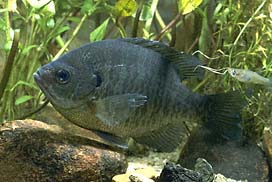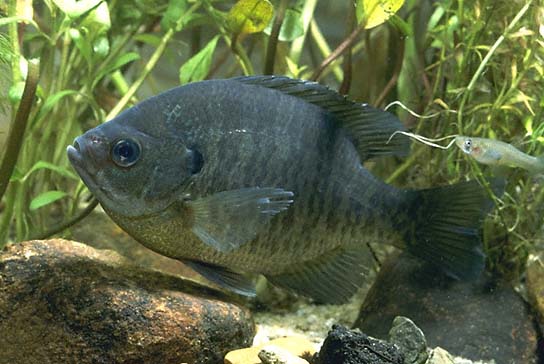Flatfishes, sunfishes, and perchlike fishes
Description
The Banded Sunfish is a member of the family Centrarchidae. Sunfishes are one of the most widespread and popular groups of freshwater sport fishes. Their dorsal fins are joined, separated only by a notch, and the anal fin has 3 or more spines. The caudal fin is usually forked, and the gill membranes are usually separate. Except for a single species native to California, sunfishes are indigenous to warm waters of North America east of the Rocky Mountains. However, as a result of their popularity with anglers, their range has been increased by introducing them into other areas. There are 32 species in North America.
Habitat
The banded sunfish can be found in the Atlantic coastal region from New Hampshire south to central Florida. It is found in small ponds and backwaters of creeks to small and large rivers and boggy brooks over sand or mud in sluggish, acidic, heavily vegetated waters.
Diet
The banded sunfish feeds upon aquatic insects, microcrustaceans, and small fish.
Reproduction
Spawning occurs from April through July. They can spawn when they become one year old. The male will construct a sand or gravel nest where the eggs are laid.
Status
The banded sunfish is currently endangered in Pennsylvania, New York, New Jersey, New Hampshire, and Connecticut. It is globally stable, though.


